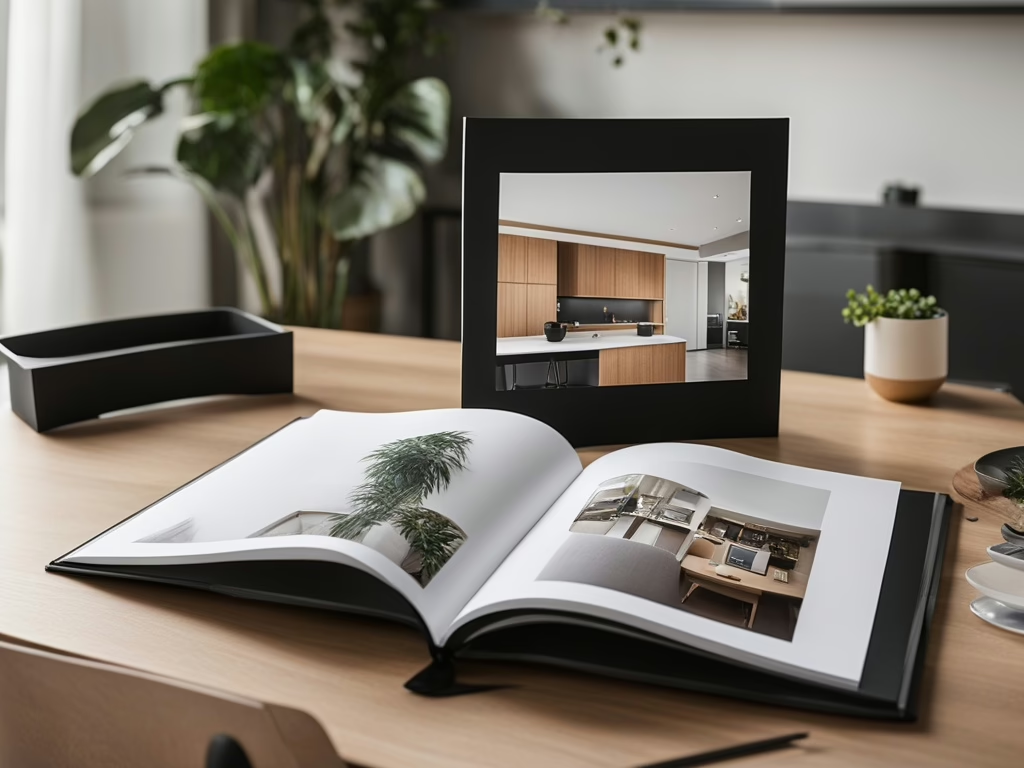
A well-designed interior design portfolio is the key to showcasing your style, skills, and creativity. Whether you’re an emerging designer or an experienced professional, a strong portfolio helps attract clients and build credibility in the competitive design industry. This guide will walk you through the essential steps to create a compelling portfolio that sets you apart.
Why an Interior Design Portfolio Matters
Your interior design portfolio is more than just a collection of images; it’s your professional identity. A well-structured portfolio:
- Highlights your best work in a polished and professional manner.
- Showcases your unique design aesthetic and versatility.
- Builds trust and credibility with potential clients.
- Helps establish your expertise in the industry.
Essential Elements of a Winning Interior Design Portfolio
1. Introduction & Designer Profile
- Start with a compelling bio that reflects your design philosophy.
- Include a professional headshot and contact details.
- Briefly highlight your education, experience, and key accomplishments.
2. Curate Your Best Work
- Select projects that represent your range and expertise.
- Showcase a variety of styles, from modern minimalism to classic elegance.
- Prioritize high-quality images that demonstrate attention to detail.
3. Project Breakdown & Descriptions
- Include before-and-after images to illustrate transformations.
- Explain the design concept, challenges, and solutions.
- Highlight the materials, color schemes, and furnishings used.
4. Mood Boards & Sketches
- Feature hand-drawn sketches or digital renderings.
- Show your creative process and initial concepts.
5. How to Create a Portfolio Without Clients
- Develop mock projects to showcase your design style and expertise.
- Redesign existing spaces, such as your own home or a friend’s space.
- Create digital renderings and mood boards that reflect your ideal projects.
- Collaborate with photographers or stylists for staged shoots.
- Use before-and-after transformations from personal projects to build credibility.
6. Client Testimonials & Case Studies
- Include feedback from satisfied clients.
- Present case studies outlining successful projects.
7. Press Features & Recognitions
- Showcase media mentions, awards, or published work.
- Provide links to any articles or industry collaborations.
8. Contact Information & Call to Action
- Make it easy for clients to get in touch.
- Include links to your website, social media, and inquiry forms.
Tips for Creating a Standout Interior Design Portfolio
1. Quality Over Quantity
- Feature only your best projects.
- A small, well-curated selection is more effective than an overwhelming collection.
2. Keep It Visually Engaging
- Use a clean, modern layout with consistent branding.
- Incorporate high-resolution images with balanced spacing.
3. Customize for Your Audience
- Tailor your portfolio based on your ideal client.
- Emphasize projects that align with their needs and preferences.
4. Maintain Both Digital & Print Versions
- Have an online portfolio for easy sharing and accessibility.
- Keep a professionally printed version for in-person meetings.
Call to Action
Ready to create a portfolio that attracts dream clients? Join our Interior Design/Home Staging Business Incubator for expert guidance, and explore our industry-leading courses at The Academy of Home Staging & Design to elevate your design career today!